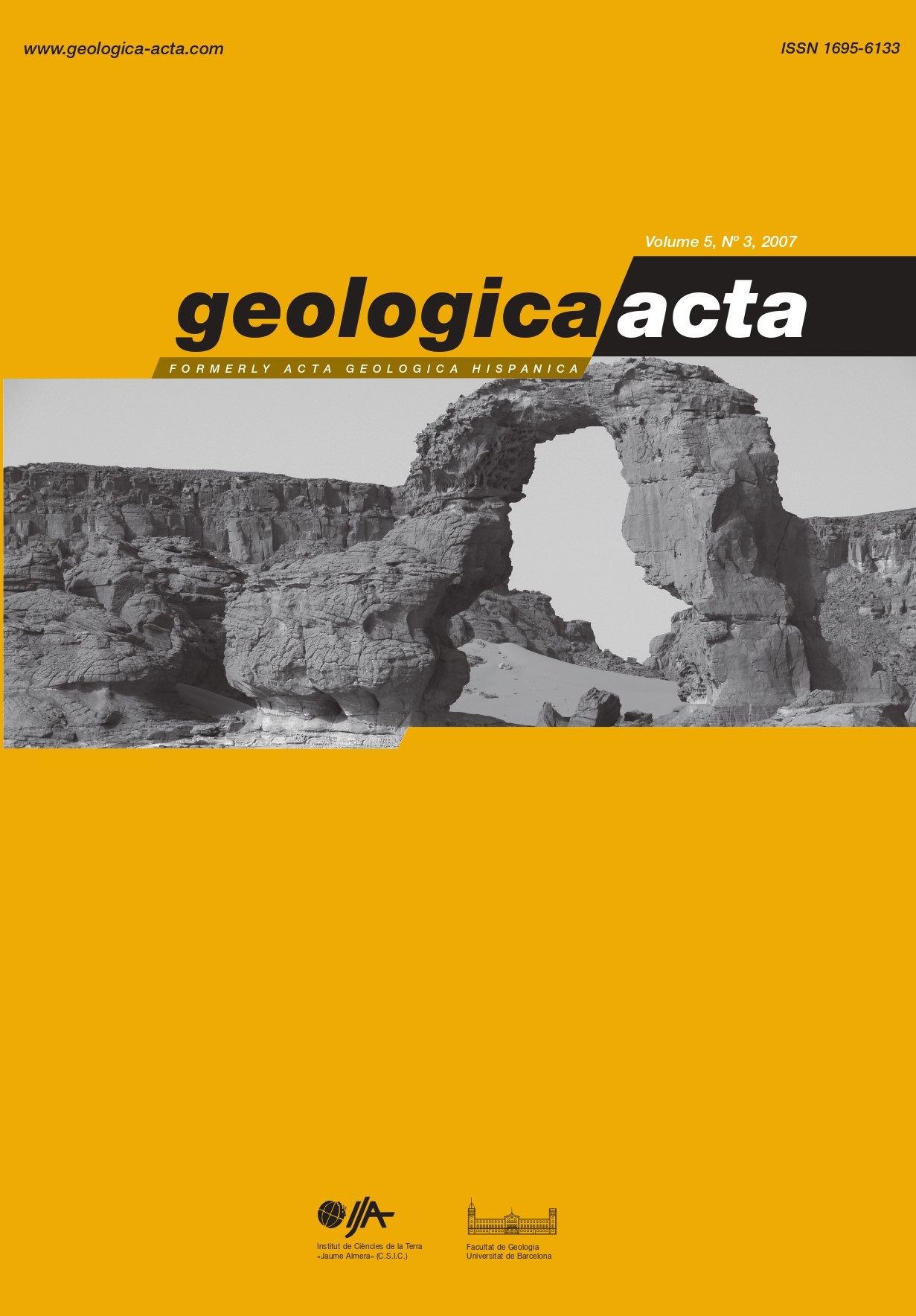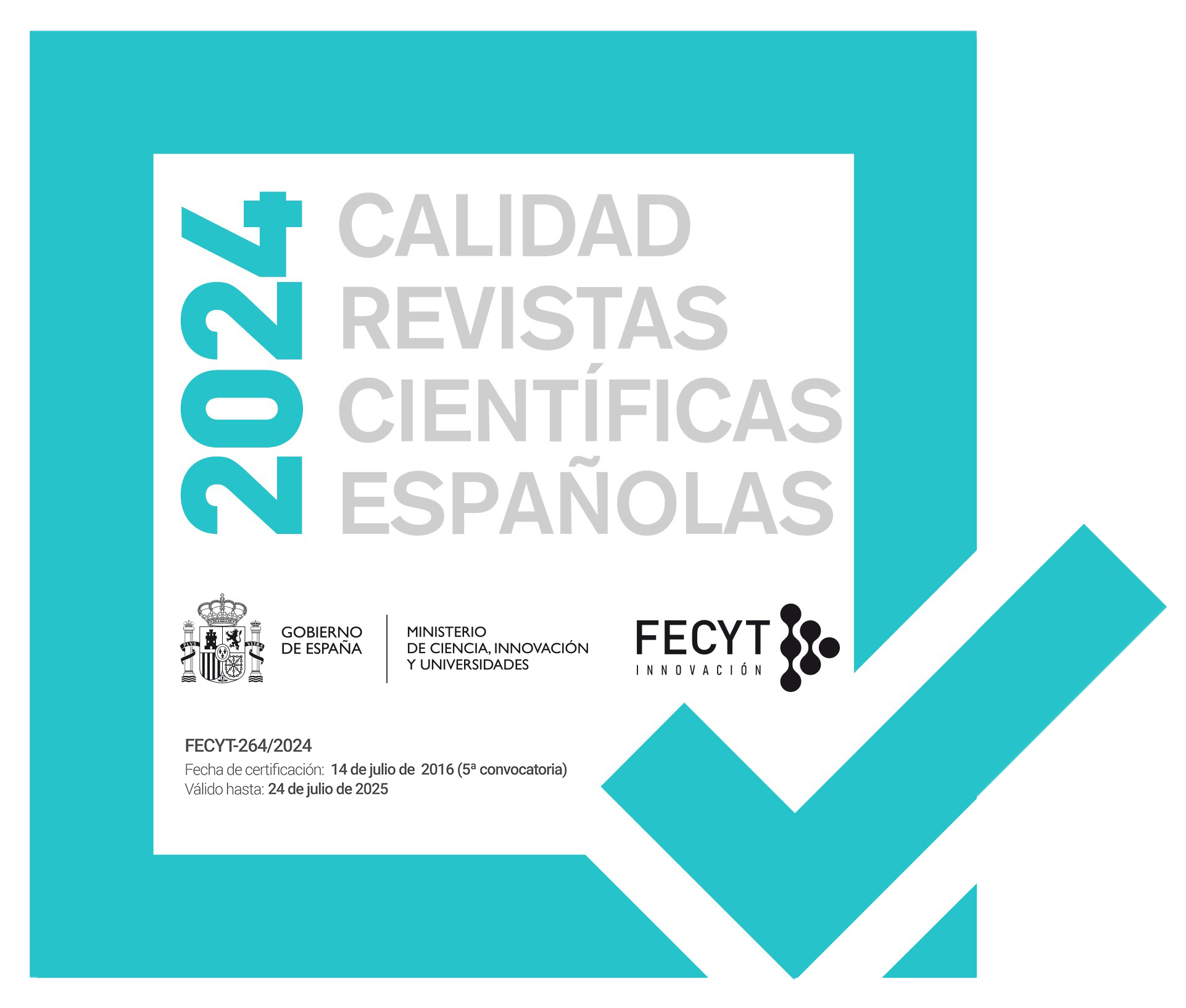New potential hydrocarbon source-rocks in the Lower Eocene Metlaoui Formation (Central-Northern Tunisia, Northern Africa)
DOI:
https://doi.org/10.1344/105.000000297Keywords:
Ypresian, Source rocks, TOC, Tmax, n-Alkanes, Sub-oxic conditions, TunisiaAbstract
New potential hydrocarbon source-rocks in the Lower EoceneMetlaoui Formation (Central-Northern Tunisia, Northern Africa)Significant quantities of organic matter accumulated and were preserved in central-northern Tunisia during theYpresian (Early Eocene). The organic geochemical characterization of the organic-rich facies of the YpresianMetlaoui Formation (Ousselat and Es-Sfeïa sections) shows their significant potential as source rocks andincreases interest in the Central-Northern Tunisia oil play. The TOC content in these rocks ranges from 0.09 to3.71% suggesting their petroleum potential, whereas their T maxfluctuates from 429 to 439°C. These values andthe predominance of the hetero compounds (NSO; 2-95%) point to low organic matter maturation. The diversematurity levels reported for these organic-rich rocks never reached the conventional oil window peak stage andresulted from their different locationswithin the basin. The HI values and the high saturate concentrations(1-91%) compared to aromatics (1-33%), as well as the predominance of short-chain n-alkanes centered at n-C18 and n-C20 are indicative of unequivocal type-II kerogen. The fluctuation of the pristane/phytane ratio(0.97-2.53) records changes of the basin redox conditions, which mainly evolved around the sub-oxic range.
References
Ben Ferjani, A., Burollet, P.F., Mejri, F. (eds.), 1990. Petroleum Geology of Tunisia. In: Entreprise Tunisienne d’Activités
Pétrolières. Tunis, 194 pp.
Ben Jemia-Fakhfakh, H., Dridi, M., Hadiji L., 2002. Eocene nummulitic limestone reservoirs in eastcentral Tunisia. The Eighth Tunisia Petroleum Exploration and Production Conference. Tunis. Field trip guidebook, Memoir, 17, 35 pp.
Bordenave, M.L., Espitalié, J., Leplat, P., Oudin, J.L., Vandenbroucke, M., 1993. Screening techniques for source rock evaluation. In: Bordenave, M.L. (ed.). Applied Petroleum Geochemistry. Paris, Editions Technip, 246-250.
Boukadi, N., El Ayeb, S., Kharbachi, S., 2000. Analyse quantitative de la fracturation des calcaires yprésiens en Tunisie:
l’exemple de Jebel Ousselat. Bulletin de la Société Géologique de France, 3, 309-315.
Burollet, P.F., 1956. Contribution à l’étude stratigraphique de la Tunisie centrale. Tunis, Annale des Mines Géologiques, 18,
pp.
Connan, J., Cassou, A.M., 1980. Properties of gas petroleum liquids derived from terrestrial kerogen at various maturation levels. Geochimica Cosmochimica Acta, 44, 10-23.
Didyk, B.M., Simoneit, B.R., 1989. Hydrothermal oil of Guaymas Basin and implications for petroleum formation mechanisms. Nature, 342, 65-70.
Didyk, B.M., Simoneit, B.R.T., Brassell S.C., Eglinton G., 1978. Organic geochemical indicators of paleoenvironmental conditions of sedimentation. Nature, 272, 216-222.
Durand, B., 1993. Composition and structure of organic matter in immature sediments. In: Bordenave, M.L. (ed.). Applied
Petroleum Geochemistry. Paris, Editions Technip, 77-100.
Espitalié, J., Deroo, G., Marquis, F., 1985. La pyrolyse RockEval et ses applications. Revue Institut Français du Pétrole, Part I, 40, 563-578, Part II, 40, 755-784.
Espitalié, J., Laporte, J.L., Madec, M., Marquis, F., Leplat, P., Paulet, J., Boutefeu, F., 1977. Méthode rapide de caractérisation des roches mères, de leur potentiel pétrolier et de leur degré d’évolution. Revue Institut Français du Pétrole, 32, 23-42.
Kennicutt, M.C., 1988. The effect of biodegradation on crude oil bulk and molecular composition. Oil Chem Pollut, 4, 89-112.
Lijmbach, G.W.M., 1975. On the origin of petroleum. Proceedings of the 9th World Petroleum Congress, Tokyo, Applied
Science Publishers, London, vol. 2, 357-369.
Overton, E.B., McFall, J.A, Mascarella, S.W., Steele, C.F., Antoine, S.A., Politzer, I.R., Laseter, J.L., 1981. Identification of petroleum sources after a fire and oil spill. International Oil Spill Conference, USCG/API/EPA, Washington (DC), American Petroleum Institute, 541-546.
Peters, K.E., Moldowan, J.M. (eds.), 1993. The Biomarker Guide. Interpreting Molecular Fossils in Petroleum and Ancient Sediments. Englewood Cliffs, NJ, Pretice-Hall, 363 pp.
Peters, E.K., Frase, H.T., Amris, W., Rustanto, B., Hermento, E., 1999. Geochemisty of crude oils from Eastern Indonesia.
American Association of Petroleum Geologists Bulletin, 83, 1927-1942.
Rigane, A., 1991. Les calcaires de l’Yprésien en Tunisie centroseptentrionale cartographie, cinématique et dynamique des structures. Thesis 3rd cycle. Université de Franche Comté, 214 pp.
Tissot, B.P., Welte, D.H., 1984. Petroleum Formation and Occurrence. New York, Springer Verlag, 699 pp.
Turki, M.M., 1985. Polycinématique et contrôle sédimentaire associé sur la cicatrice de Zaghouane-Nebhana. Doctoral thesis. Université de Tunis, 25 pp.
Vandenbroucke, M., Bordenave, M.L., Durand, B., 1993. Transformation of organic matter with increasing burial of sediments and the formation of petroleum in source rocks. In: Bordenave, M.L. (ed.). Applied Petroleum Geochemistry.
Paris, Editions Technip, 101-121.
Vennin, E., van Buchem, F.S.P., Joseph, P., Gaumet F., Marc, S., Rebelle, M., Ben Jemia-Fakhfakh, H., Zijilstra, H., 2003. A 3D outcrop analogue model for Ypresian nummulitic carbonate reservoirs: Jebel Ousselat, northern Tunisia. Petroleum Geoscience, 9, 145-161.
Waples, D.W., 1985. Geochemistry in petroleum exploration. Boston, Reidel Publishing Company ed., 232 pp.
Yamanaka, T., Mizota, C., Murae, T., Hashimoto, J., 1999. A currently forming petroleum associated with hydrothermal
mineralization in a submarine calderas, Kagoshima Bay, Japan. Geochemical Journal, 33, 355-367.
Downloads
Published
Issue
Section
License

This work is licensed under a Creative Commons Attribution-ShareAlike 4.0 International License.
Copyright
Geologica Acta is the property of the UB, GEO3BCN, IDAEA and UAB. Geologica Acta must be cited for any partial or full reproduction. Papers are distributed under the Attribution-Share Alike Creative Commons License. This license allows anyone to reproduce and disseminate the content of the journal and even make derivative works crediting authorship and provenance and distributing possible derivative works under the same or an equivalent license.
Author Rights
Authors retain the copyright on their papers and are authorized to post them on their own web pages or institutional repositories. The copyright was retained by the journal from the year 2003 until 2009. In all cases, the complete citation and a link to the Digital Object Identifier (DOI) of the article must be included.
The authors can use excerpts or reproduce illustrations of their papers in other works without prior permission from Geologica Acta provided the source of the paper including the complete citation is fully acknowledged.




